A LEGO Tiny Plants set
When I saw this set on Lego.com, I could not help but think about how much fun it would be to build and photograph and I started thinking of all the possibilities that this set would bring. One of the attractions for me was that each plant was a small build, so If I wanted something that I could build in a short amount of time to relax after a day at work and make a quick photo project from, this set was perfect.
Lego Set #10329, 758 pieces – 18+
Tiny Plants Through the Lens
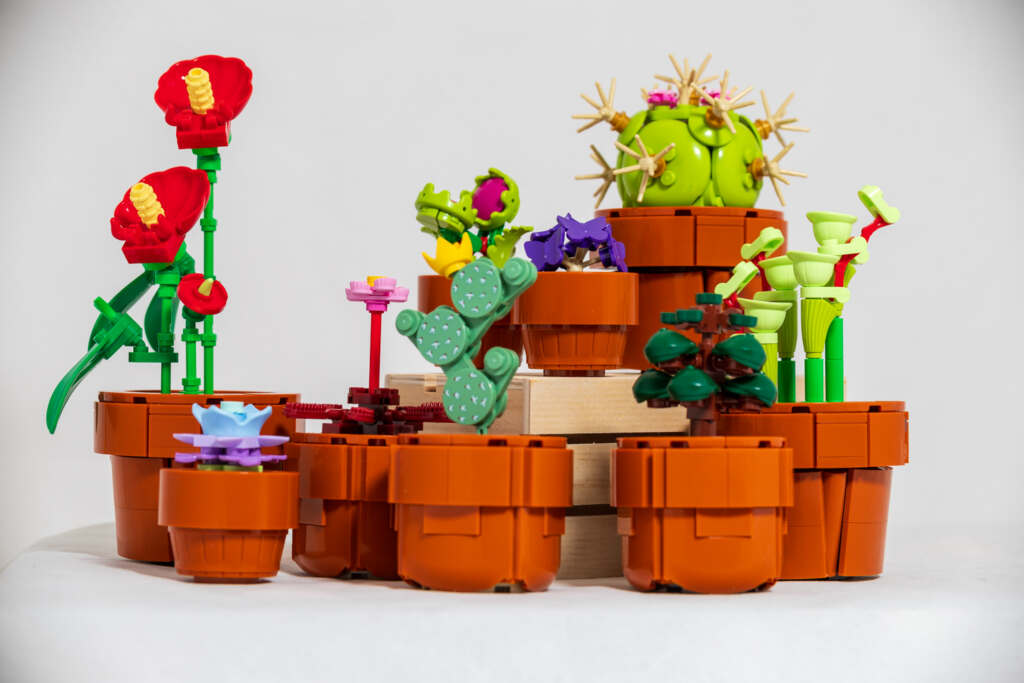
A second plus for me is that I have been interested in learning new techniques and for a long time have wanted to learn stop motion animation. This set, having beautiful, bright colors and smaller builds, would be the perfect way to start experimenting with that process. (I was also inspired by other photographers on ToyPhotography.com and my desire to try it was renewed watching their stop action animations.
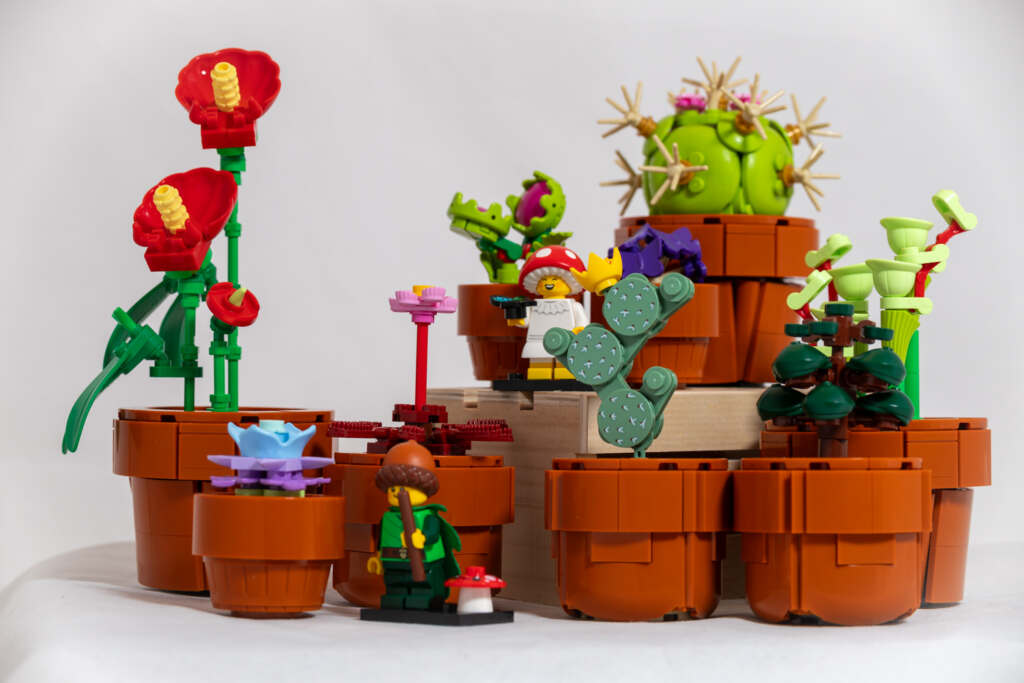
The set has nine plants total, in three different groupings, tropical, arid and carnivorous. Each group has its own instruction manual. These books also give a brief overview of the plants including interesting facts about the Lego pieces. For some of the builds, lego parts are recolored and repurposed specifically for this set. Each of the three groups of plants has three fun and easy builds ranging from about 5 minutes to 30 minutes. There were no stickers and five pre printed pieces – which in my opinion is a big plus from a photographers stand point.
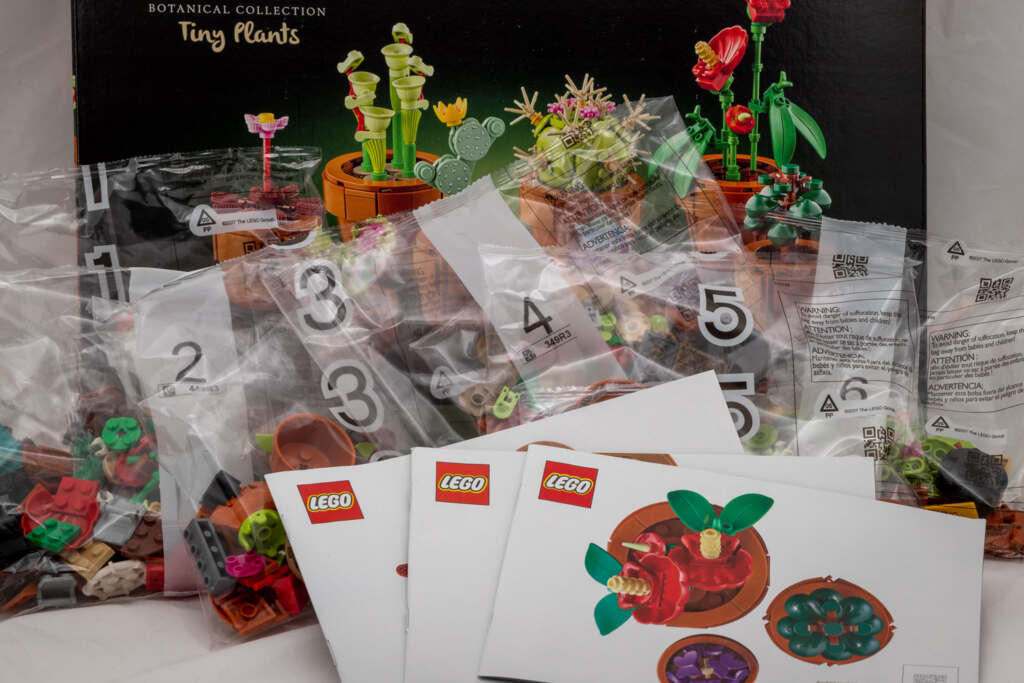
Tropical Plants
Laceleaf (Anthurium andraeanum)
I chose the Red Laceleaf first, because as mentioned before, I’ve wanted to try my hand at stop action photography. While I didn’t know where to start, I figured now will be a good time to jump in and figure it out.
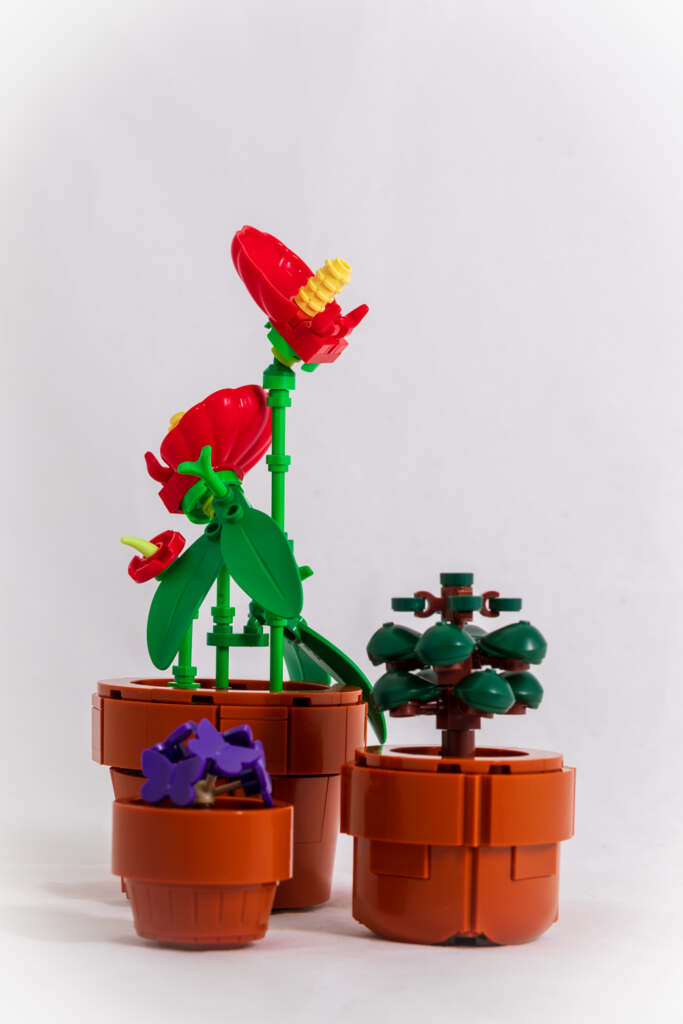
For a long time I have wanted to photograph a build where I put a piece or two on and then took a photo and put it all together in the end in an animated sequence, and because of its size and coloring, this is the plant I chose for that. It turned out to be a good choice, however, in the end, after struggling with getting a few key pieces on without having to move the figure too much, I ended up photographing it while I was disassembling it instead of building it. This worked perfectly. It was a quick fix to rebuild it and get it ready for an actual photo shoot.
Please note: if not trying to place these pieces on blindly, around a camera that can’t be moved and onto a Lego build, that also cannot be moved, they go on easily which is why I suggest, if you want to try your hand and stop action animation, build the set and take the photos while disassembling it or choose one with a different pot type.
To see the stop action video I made using the red laceleaf click the link: Laceleaf Animation
False Shamrock (Oxalis triangularis)
This tiny purple flower took under five minutes to assemble. Like all the others I have built so far, this one contains a previous piece in a brand new color. From a photography standpoint, in my opinion it can be photographed from all angles.
Jade Plant (Crossula Ovata)
A quick little build – took around 20 minutes. It should be able to be photographed from most angles. Because of the shape of the leaves, it can prove a bit tricky to light, but I found it to be a great addition to the set.
Carnivorous Plants
Venus Flytrap (Dionaea muscipula)
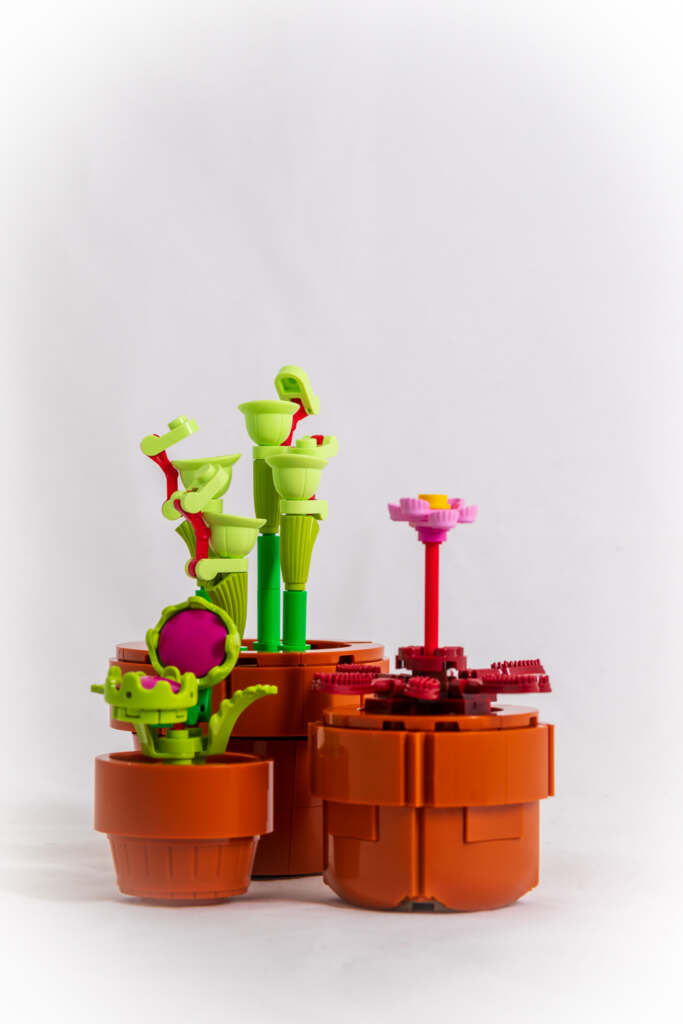
Throughout building the Venus Flytrap, as well as all the others, I focused on paying attention to the detail of the build from a photographers standpoint.
After reading reviews of other sets, one of the main points was that the side of the build that is usually unseen lacks detail. So I paid special attention to details on the build from all angles. This venus flytrap did not disappoint.
Red Sundew (Drosera brevifolia)
The Red Sundew has several different textures and in future shoots, I am looking forward to some different techniques with this one. to this one.
In my opinion the only “weak points” for this build, photography wise, would not be visible. Unless of course you turn the ‘thousands of tiny hairs’ upside down and reveal the true identity of those hairs. Which are a clever reuse of another piece, with the coloring a first especially for this set.
Yellow Pitcher Plant (Sarracenia flava)
Most of the build of this delightful yellow pitcher plant, like the Laceleaf, is in the making of the terracotta pot. I did find putting the 4 clear pieces into the top of the flower, a bit of a challenge, but once they were in the correct alignment and snapped in they were held firmly in the flower.
When photographing you will want to make sure that the sides and top of all three of the large pots are level’ and the sides are still aligned as it is easy to move them when you are touching the plant.
This, like the other builds, has fun facts about some of the pieces as well as information about the flower itself.
Arid Plants
Britton’s LiveForever (Dudleya Britonii)
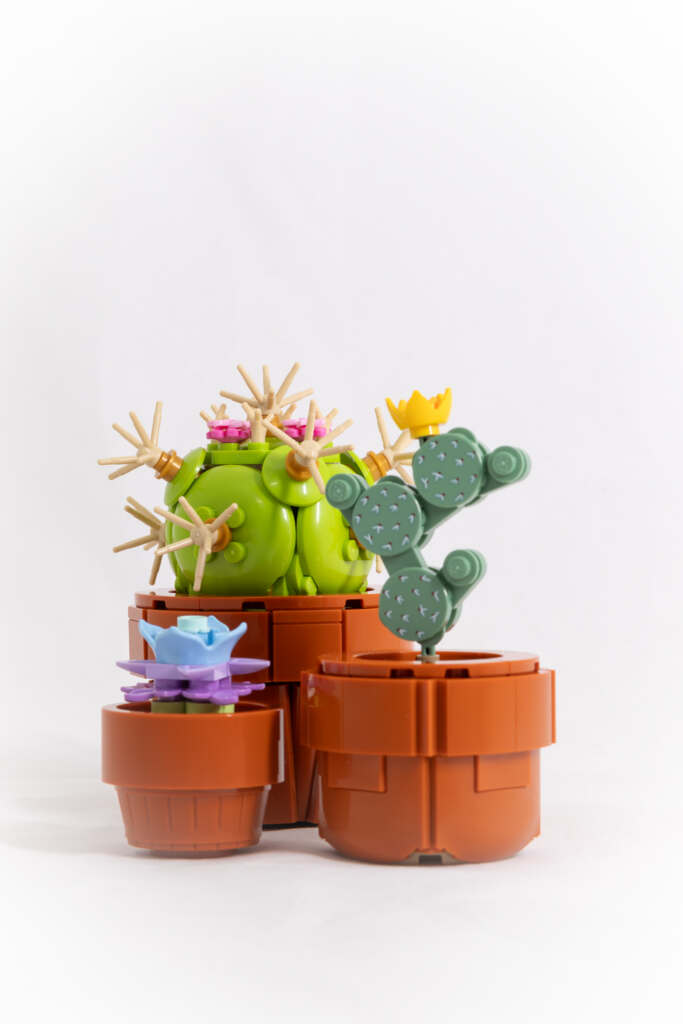
This plant can be found only in a small area of the world. Photographing the details of this plant should work from most angles.
Eastern Prickly Pear (Opuntia humifusa)
This plant is the only plant in the set that has printed pieces (apart from two Red Laceleaf ladybugs pieces). It is also one of the few plants that cannot be photographed from the back of the plant.
Pinchushion Cactus (Mammilaria crinita zellmanniana)
The many details and textures should make this one fun to photograph from any angle.
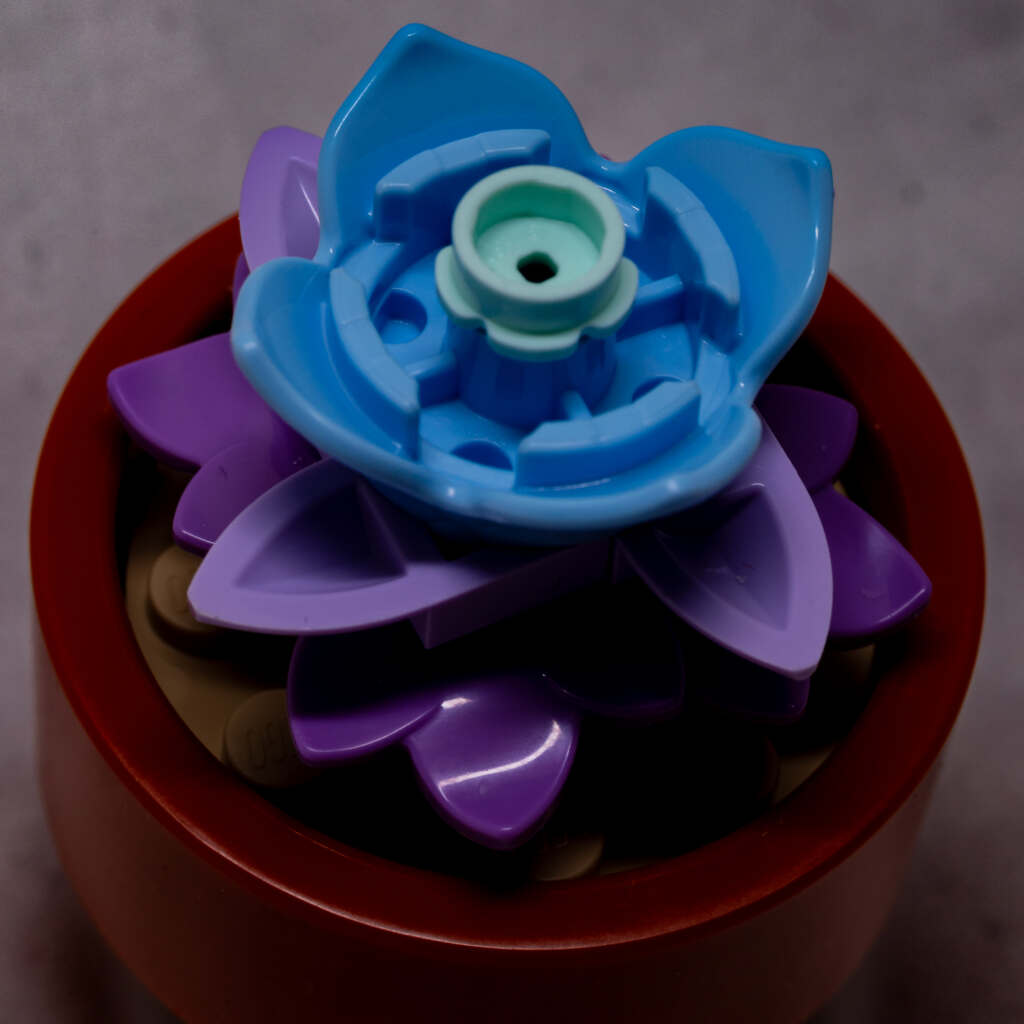
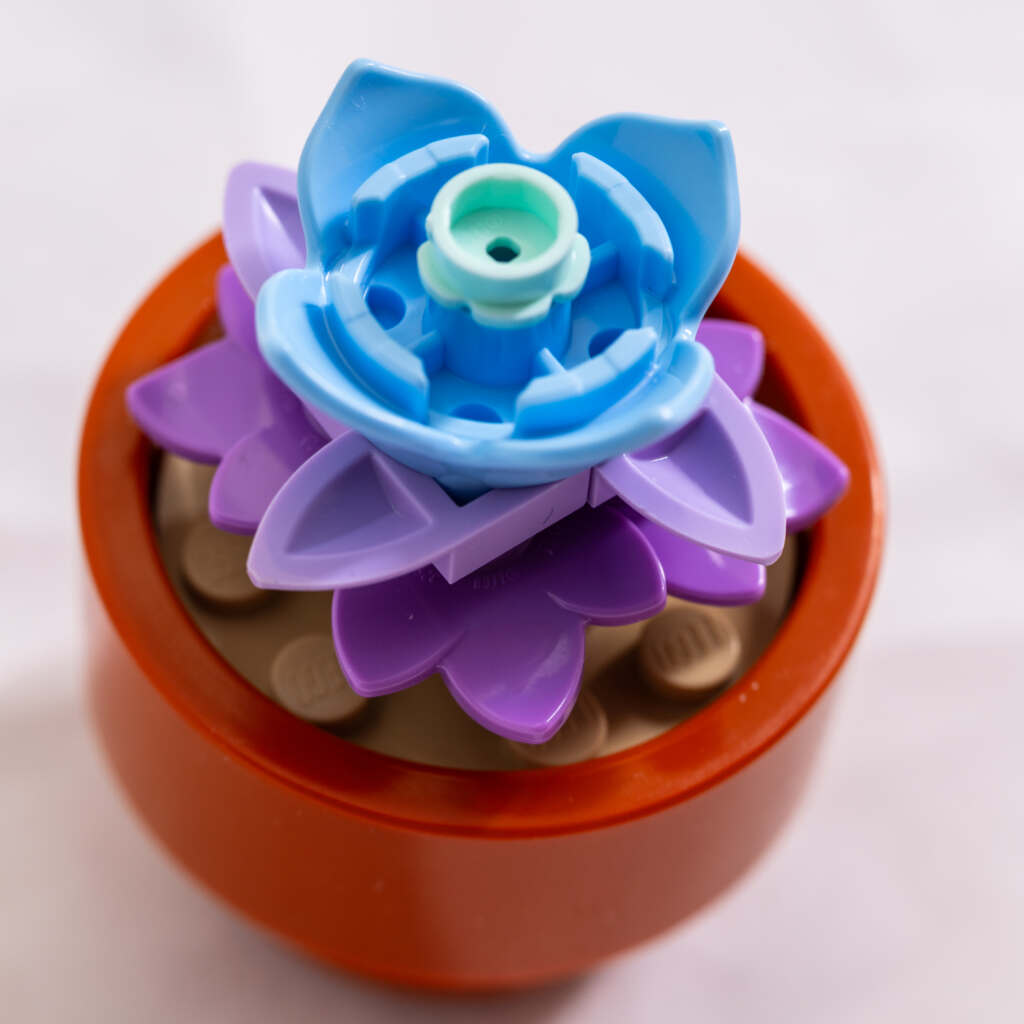
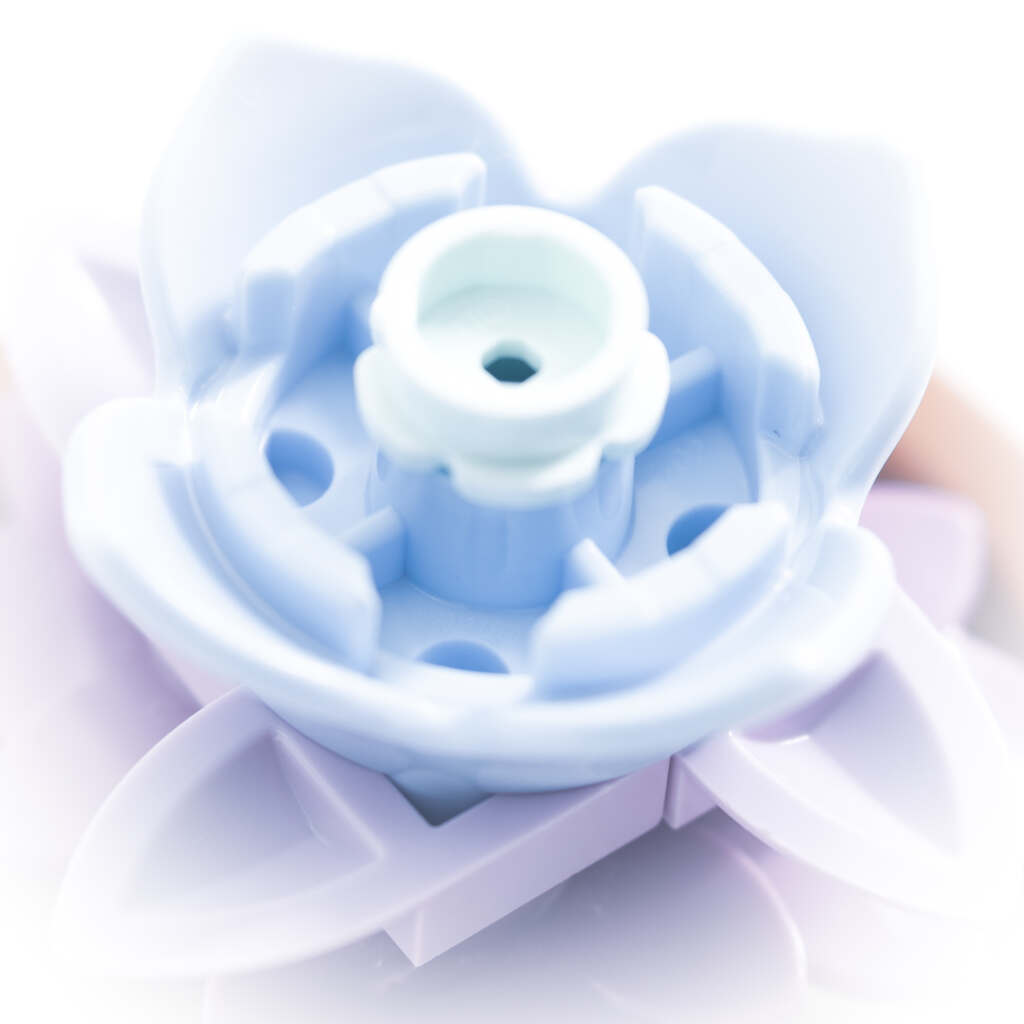
Above, on the left: Some Lensbaby Drama, center: face to face with the Lensbaby Velvet, right: a soft dreamy like image. Changing the aperture on the Lensbaby with the subject being so close left the background darker, and highlighted the flower itself. I took the liberty of enhancing the drama created by the Lensbaby.
The Brittons LiveForever, shot with Lensbaby Velvet at a distance of about 6 inches. Minimal editing, including a quick removal of a few rough spots, This flower like a majority of the plants in this set can be shot from multiple angles.
Arid Plants
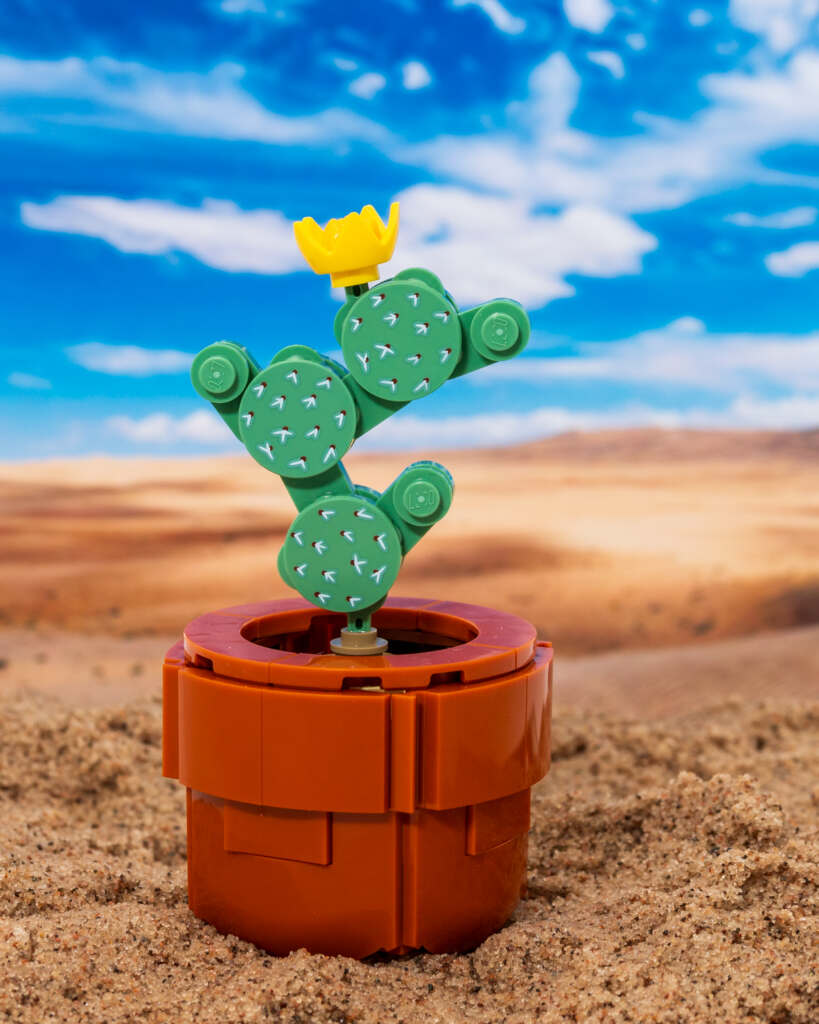
If you want to photograph the plants in the biggest pots, close up or with a macro lens, you will want to watch the lines in the pots themselves or do some creative composition. There are small gaps in the pots that are barely noticeable except through the unforgiving eye of the macro lens. However, it is a relatively easy fix in photoshop to remove them. Also with the way the large pots are put together it is easy to inadvertently move the pieces of the pot to an undesirable angle while moving them. So you will want to double check the pots if you change them to a different position.
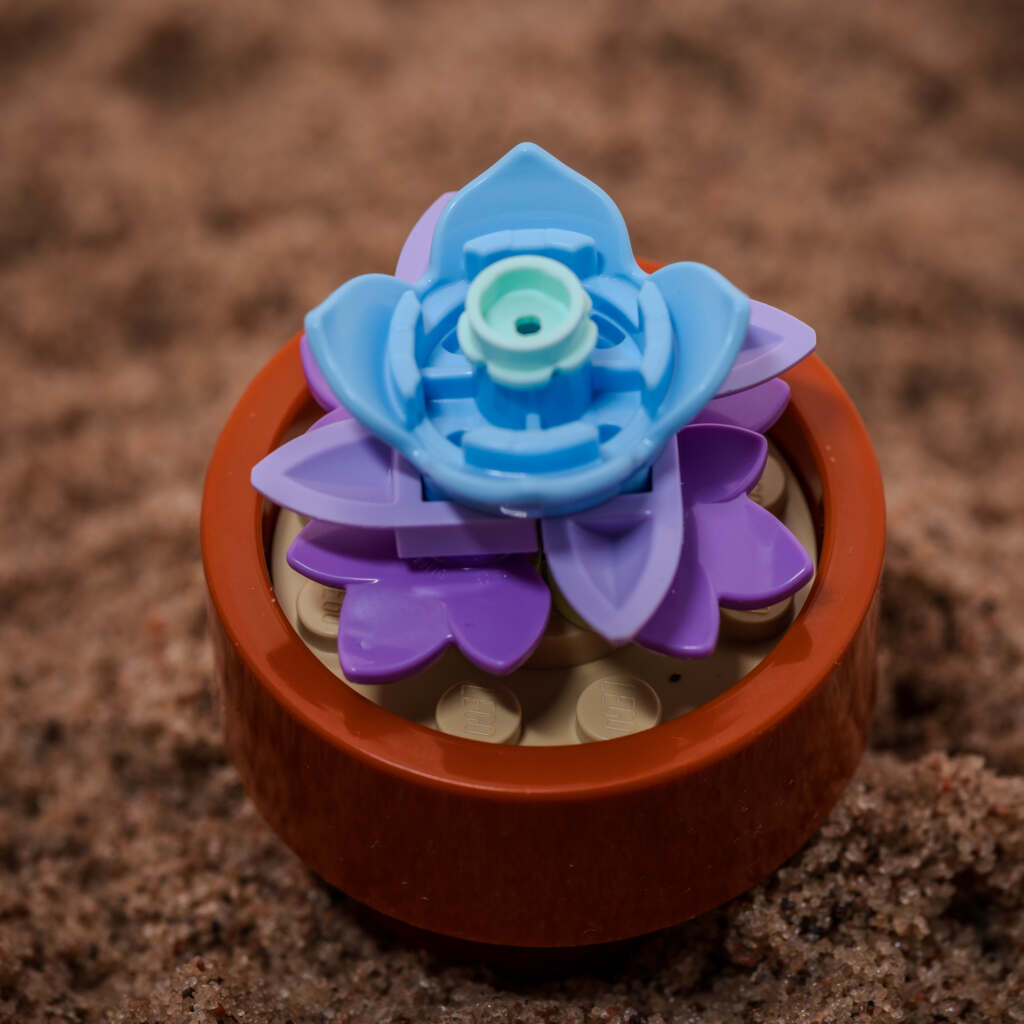
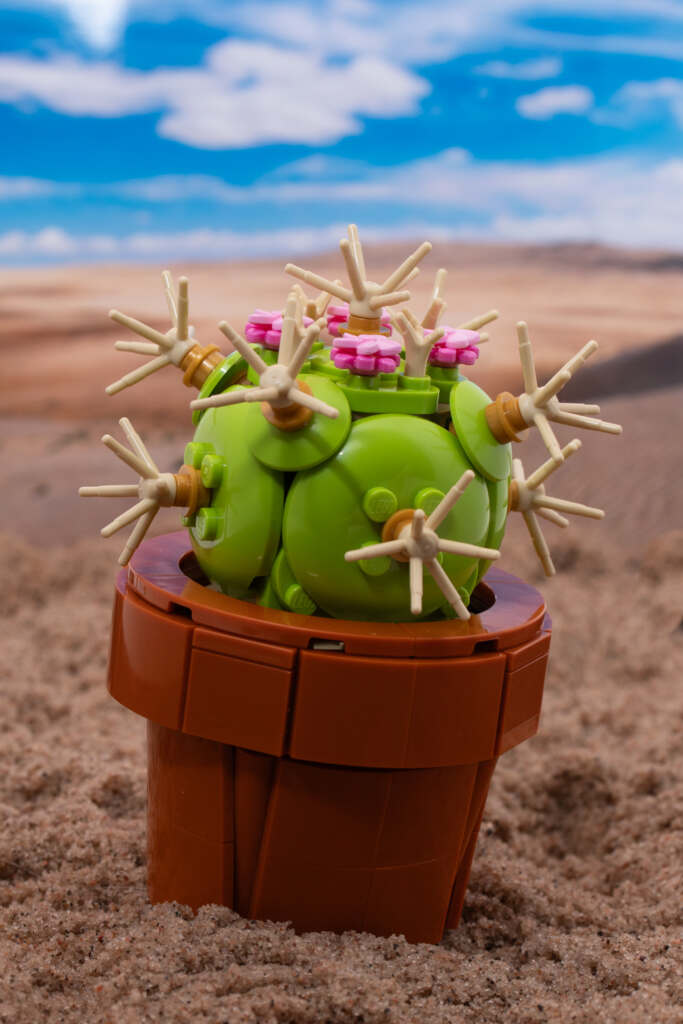
Carnivorous Plants
I enjoyed building this entire set and the plants were fun to photograph and a majority of the plants were able to be photographed from almost any angle.
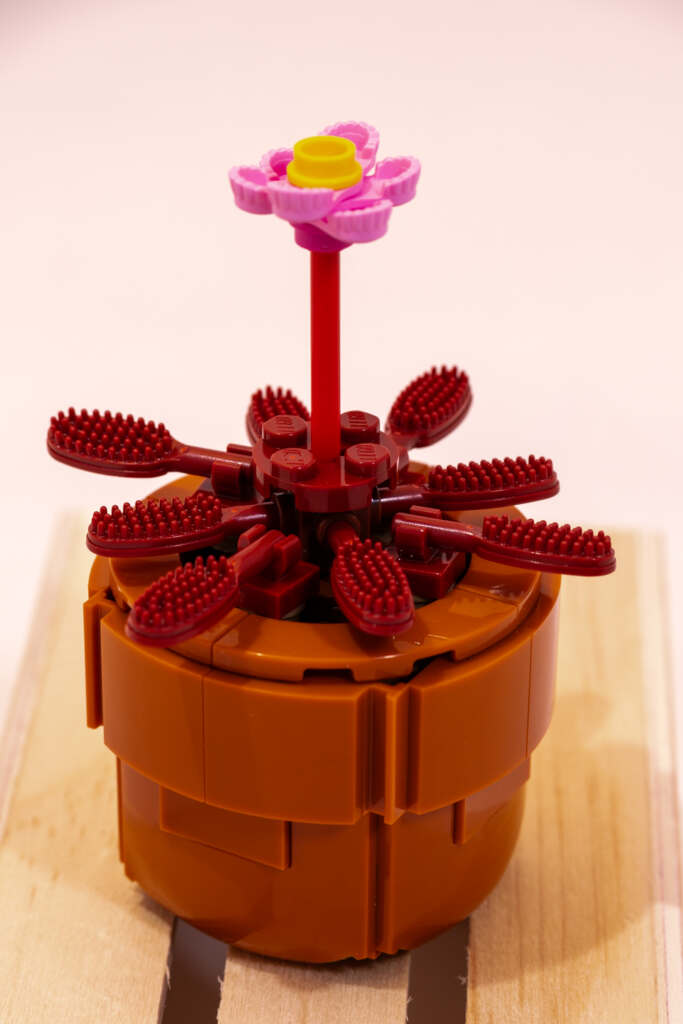
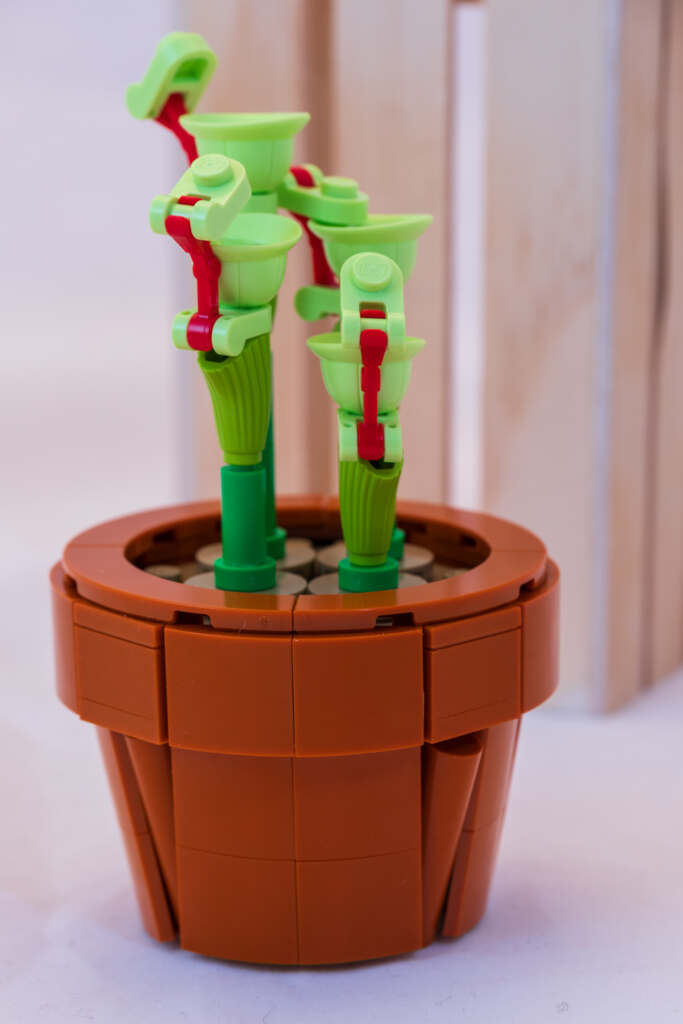
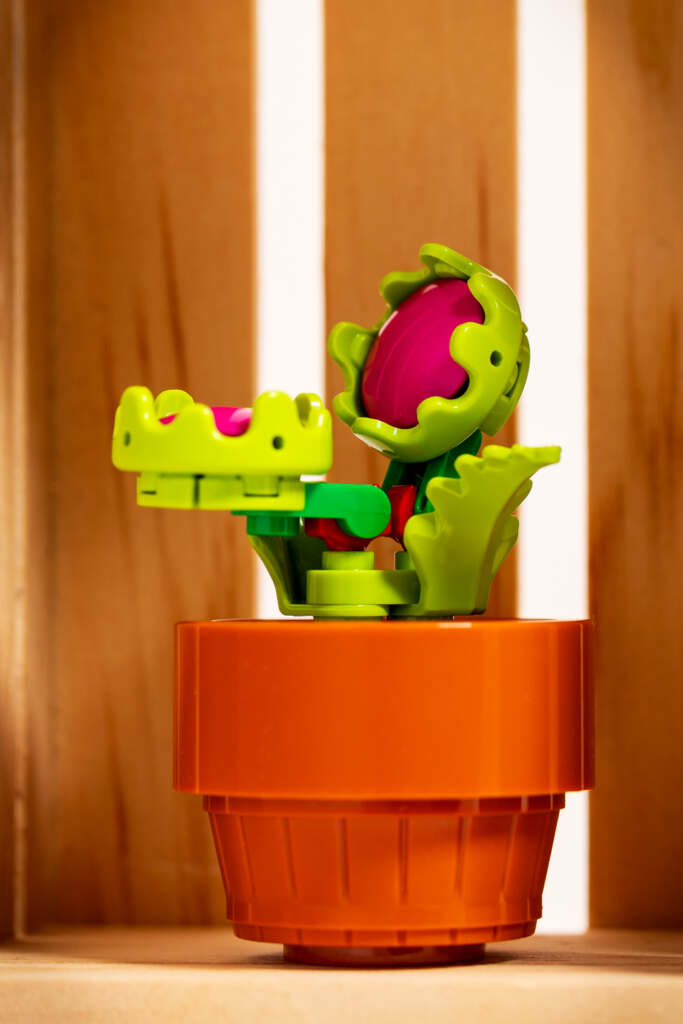
Tropical Plants
The red laceleaf, (right) even includes two Ladybugs.
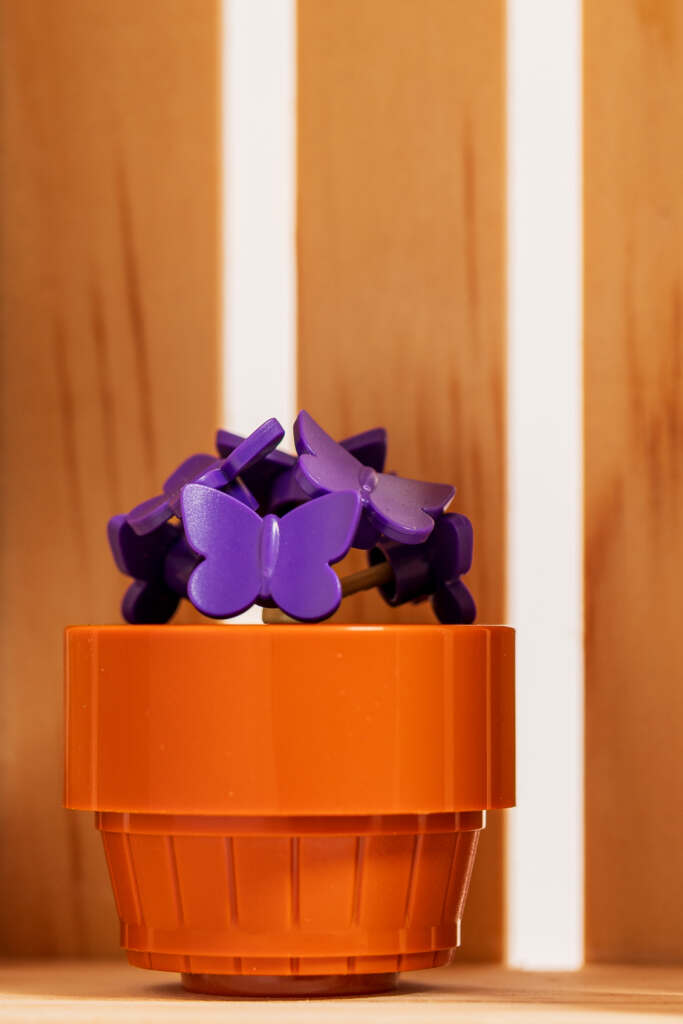
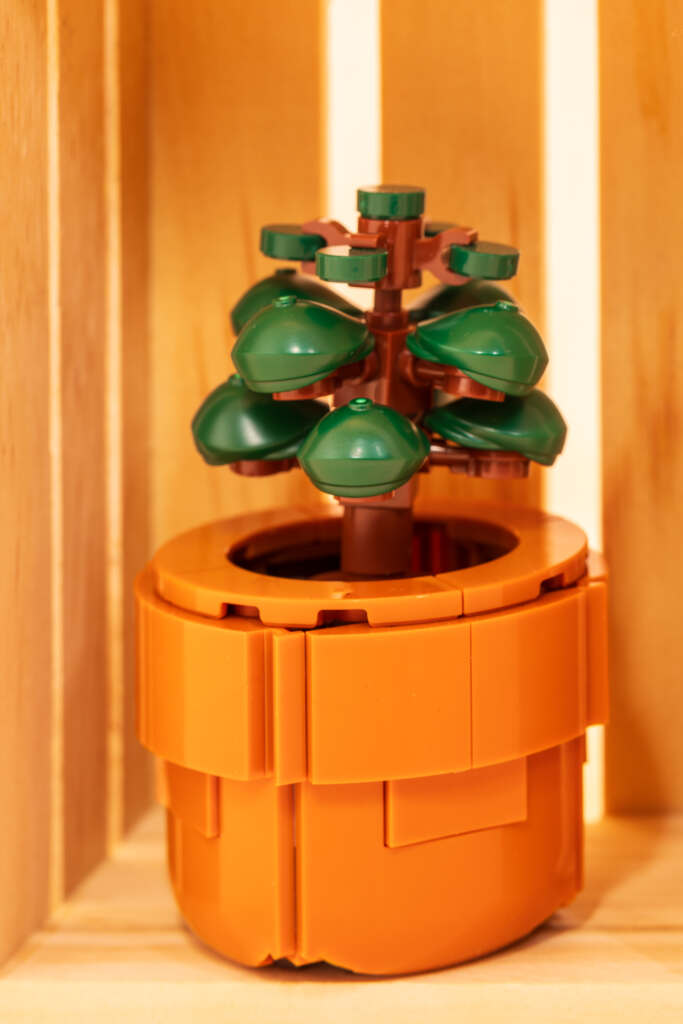

Thank you for checking out my review! Beth O’Meara


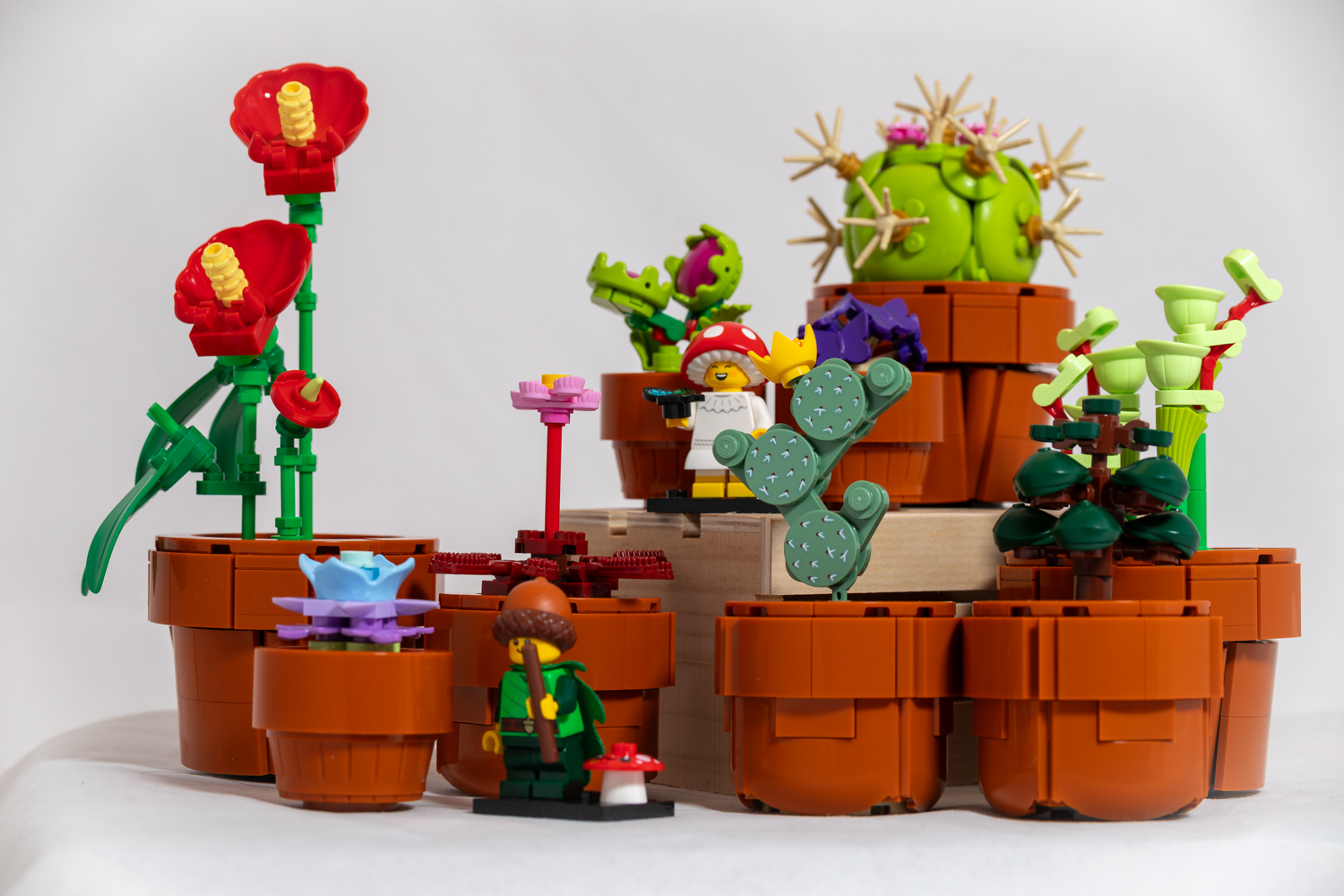
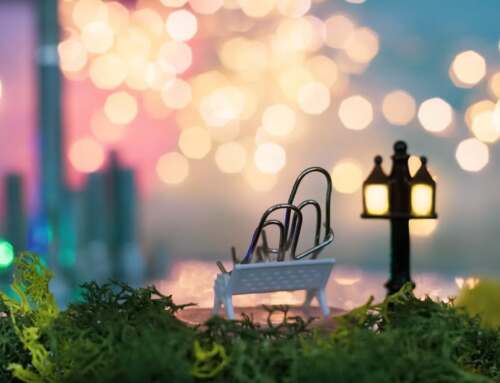

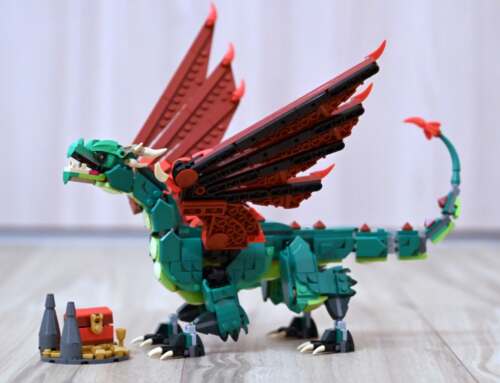

Excellent review. I have been building this set in my spare time to stretch out the fun and loving it.
Mary, Thank you! As you have discovered, it is a fun set to build. I love all the little ‘notes’ they have about the pieces they have repurposed for the set.
What a fun set! Thanks for sharing your insights, Beth!
It was fun, Teddi. You are welcome, my apologies for not seeing this sooner!